
Cute Thala plays with her human and a vintage Roland synthesizer. I’m pretty sure it’s an RS-09 Organ/String synthesizer.
Submitted by Frederic Fantastic Preuss via our Facebook page.


Cute Thala plays with her human and a vintage Roland synthesizer. I’m pretty sure it’s an RS-09 Organ/String synthesizer.
Submitted by Frederic Fantastic Preuss via our Facebook page.
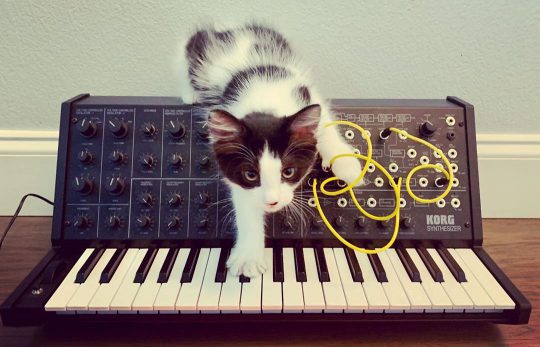
Meet Brisket, an adorable tuxedo cat. Brisket is showing off a Korg MS-20 mini today. You can see more photos on Steve Peglar’s Instagram, embedded below.
I have been intrigued with the MS-20 mini since it came out a couple of years ago. Sure, it’s not the original, but both the smaller size and the modern features like USB+MIDI make it quite attractive. You can see our review from NAMM 2013 here.
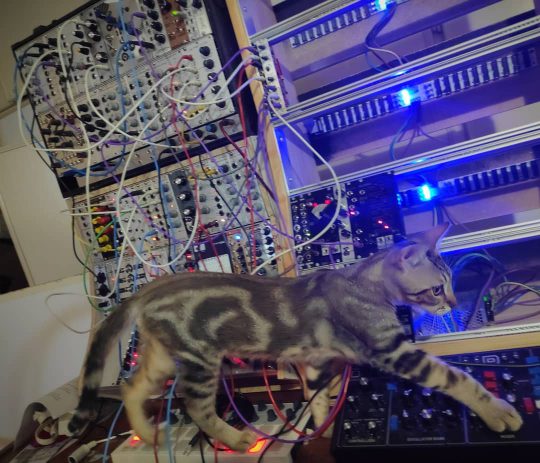
Max, with his lovely marble markings, explores the studio. He is walking past an impressive collection of Eurorack modules, stepping on an Arturia BeatStep, and about to tweak some patches on the Behringer Model D. From coresect23 on Instagram.
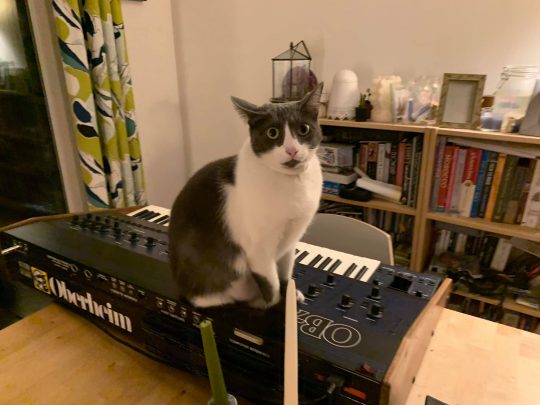
Gracie is back and performing her duties as the quality manager for Synthetic Dreamscapes.
This Oberheim OB-Xa is not totally rebuilt yet, but our Quality Manager just had to get in on the action early!
The OB-Xa is one of the classic Oberheim analog synths and was featured in lots of early 1980s synth-heavy pop music. For me personally, it would probably be more interesting to have the SEM filter to complement the other instruments, but it still has a sound that would be instantly familiar to fans of this era.
The OB-Xa is a massive analog synthesizer with a very familiar and classic Oberheim sound. Its sound, size and power are very similar to the Prophet 5 from Sequential. However this one has up to 8 voices which can be split, layered and stored!
The OB-X was very similar to the OB-Xa except that its voices could not be split or layered and, more significantly, the OB-X had a lowpass-only discrete SEM 12dB/oct state variable filter, which had a great and classic Oberheim sound. The OB-Xa changed that in an attempt to economize manufacturing and increase stability by switching to CEM3320 Curtis chips for its filters. The Xa offered two switchable filter modes: 12 dB/oct (2-pole) or 24 dB/oct (4-pole). This hardware change resulted in a more agressive sound, not quite as creamy as the OBX original, but what still became a “bread and butter” sound of the Oberheim line.
Vintage Synth Explorer: http://www.vintagesynth.com/oberheim/obxa.php
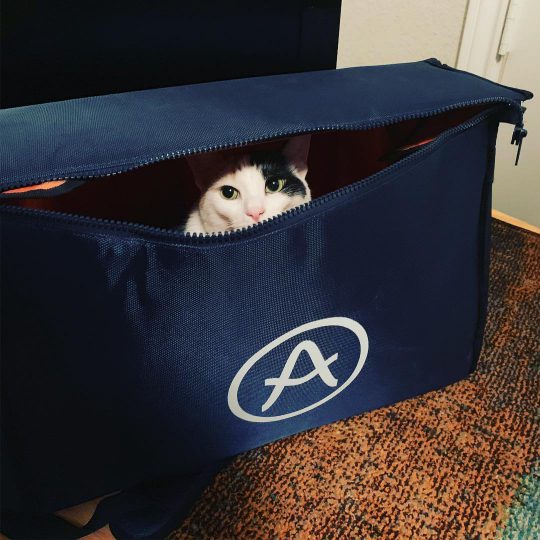
A black-and-white cat plays hide and seek in an Arturia gig bag. From particlesintowaves on Instagram.
We have the exact same back here at HQ for our Arturia MiniBrute 2 and RackBrute 3U. It makes gigging with that instrument very easy. But I hope neither Sam Sam nor Big Merp decides to make it a hiding place…
As promised in yesterday’s Weekend Cat Blogging post, here is Big Merp with our main modular system.

He always wants to be wherever the action is, and at that moment the action was in the studio, where I was editing our latest episode of CatSynth TV, which itself has a feline theme.
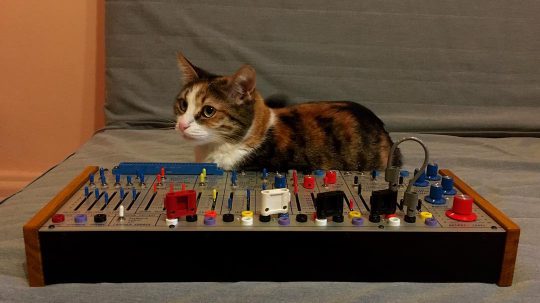
A beautiful calico cat sits behind an (also beautiful) Buchla 208 system. From macron_electron via Instagram.
The 208 is really just the top half a Music Easel, i.e., the synthesizer without the touch plate controller. Recently, my interest in Buchla gear at HQ has been rekindled, first by the announcement of the still elusive Red Panel series at NAMM, and then by the demo that we got from Thomas DiMuzio at his rehearsal for the Outsound summit.
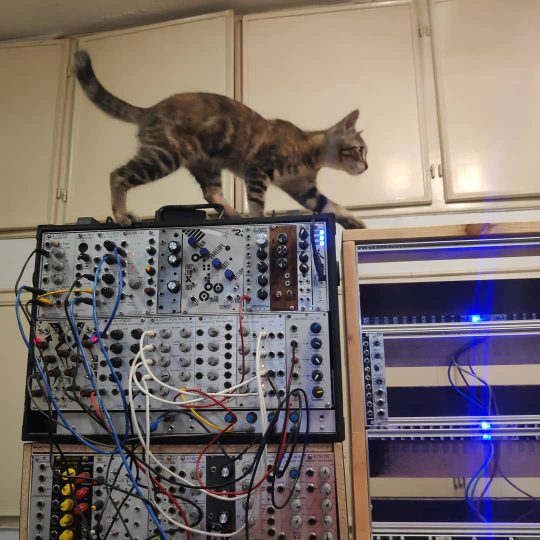
Lilly scampers on top of a Eurorack system that is still brimming with potential. From coresect23 via Instagram.
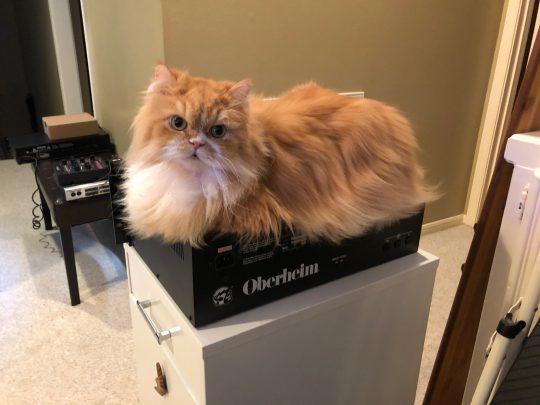
Yogi found a nice place to sit atop an Oberheim Matrix 6R rack-mount synth module. By Sayer Seely via Facebook.
The 6R is the rack-mount module version of the classic Oberheim Matrix 6 from the 1980s.
The Matrix 6 was one of the last few synthesizers from Oberheim to come out during the mid-eighties following the classic OB-series. The Matrix 6 utilized high-tech but less expensive digital and midi features and still retained a totally analog sound. It did this by using DCOs (digitally controlled oscillators) to provide stability, programmability and more. All the Matrix synthesizers featured Matrix Modulation which allows for extremely wild virtual patching for almost unlimited range of sounds and modulation capabilities!
http://www.vintagesynth.com/oberheim/mat6.php